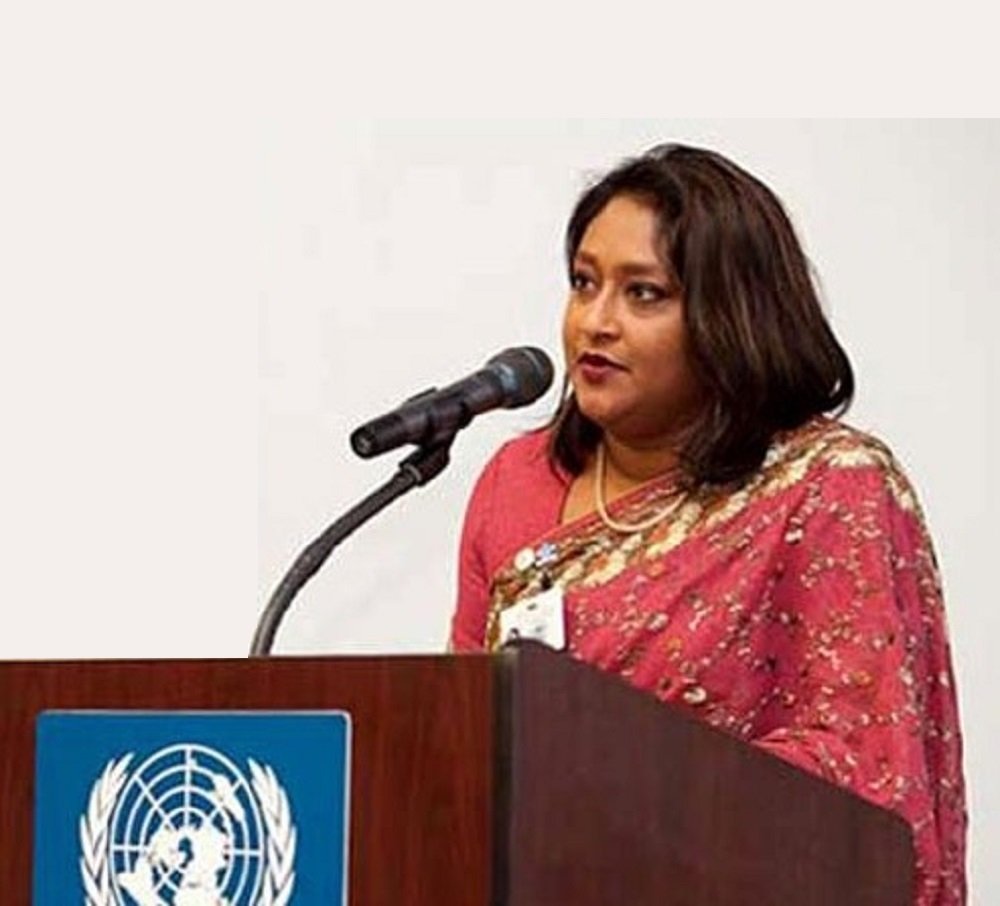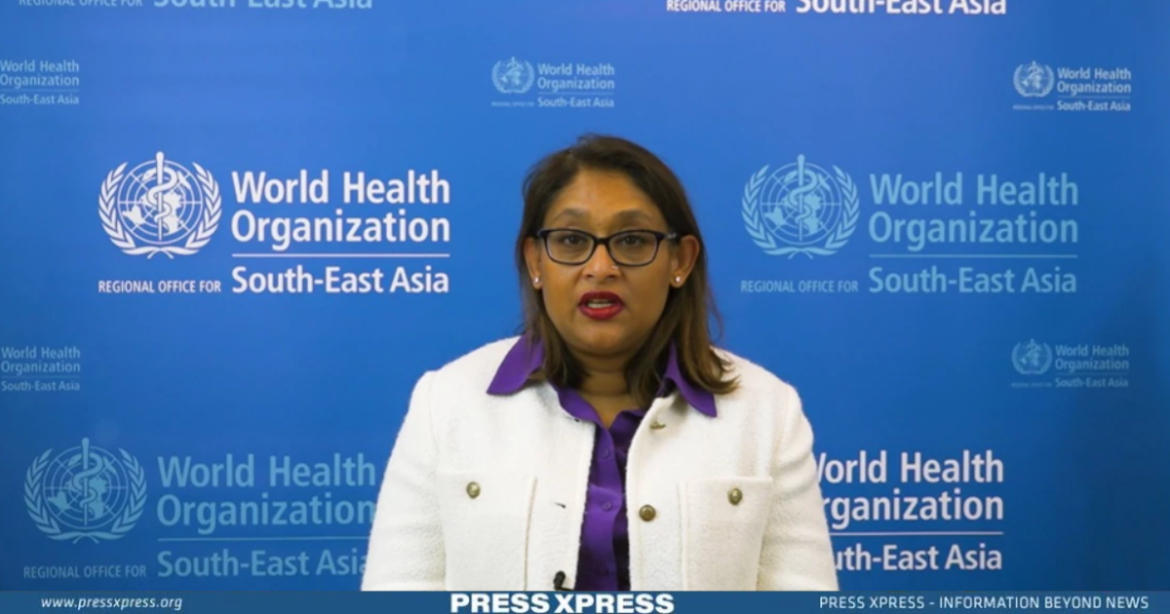Key Highlights:
- Marking International Women’s Day 2024 on March 8, WHO Regional Director for South-East Asia, Saima Wazed, emphasized the urgent necessity for increased investment in the health and well-being of women and girls
- In 8 Asia-Pacific nations, only 59.2% of women have full autonomy in decisions regarding healthcare, contraception, and consent to sexual activity
- Various barriers hinder women’s access to healthcare services, including a lack of female health providers, limited household resources and transportation
The World Health Organization (WHO) is crafting a series of priority initiatives aimed at enhancing the health and welfare of women, children, and adolescents, aligning with the Global Strategy for Women’s, Children’s, and Adolescents’ Health (2016-2030). Launched by the UN Secretary-General in 2015, the Global Strategy endeavors to eradicate preventable deaths and establish universal health coverage for all women, children, and adolescents by 2030.
You can also read: Closing Gender Gap Could Boost Global GDP Over 20% – World Bank
Marking International Women’s Day 2024 on March 8, WHO Regional Director for South-East Asia, Saima Wazed, emphasized the urgent necessity for increased investment in the health and well-being of women and girls. She stressed that such endeavors must commence with a substantial rise in overall health expenditure.
“Our Region is falling short in this aspect. Nations in our Region allot only approximately 2.9% of GDP, in contrast to the global 4%. This signifies that out-of-pocket spending, as a portion of current health expenditure, remains unacceptably high,” she conveyed in her statement.
Saima reiterated her dedication to assisting all countries in the region to augment investment in women’s health and well-being, as well as to hasten progress towards gender parity.
“When families have to pay out of pocket, they will often delay or forgo much needed care. How does this impact women? As we know, much of the burden of caring for the sick or older family members falls on women and girls. Women and girls already perform most of the unpaid work in households — spending two to five times more each day doing such work when compared to men. This highly unequal situation holds women back from fully participating in economic and political life. We know we need to accelerate progress towards gender equality and health for all. We’ve made some gains, but inequalities persist.”
– Saima Wazed, WHO Regional Director for South-East Asia

WHO’s Call to Address Women’s Health Disparities
Progress has been made in three key areas by the WHO:
– The percentage of women receiving antenatal care from skilled providers,
– Satisfaction levels with modern family planning methods, and
– Access to skilled attendance during deliveries.
However, these advancements are not equally distributed. Disparities exist based on women’s geographical location, educational attainment, and household income.

In 8 Asia-Pacific nations, only 59.2% of women have full autonomy in decisions regarding healthcare, contraception, and consent to sexual activity. The likelihood of succumbing to cardiovascular diseases (CVDs), cancers, diabetes, and chronic respiratory conditions decreased from 23.4% in 2010 to 21.6% in 2019, with a more noticeable decline in males than females in the Southeast Asia Region.
Within the South-East Asia subregion, 8.5% of adult men are diabetic compared to 8.4% of women. Additionally, obesity affects 10.2% of women and 6.4% of men.
Furthermore, 33% of partnered women aged 15-49 are expected to experience physical and/or sexual violence from a current or former spouse or male partner. Women in the region also tend to have higher rates of being overweight or obese than men, often attributed to lower physical activity levels, mobility constraints, and safety concerns.
Various barriers hinder women’s access to healthcare services, including a lack of female health providers, limited household resources and transportation, long distances to health facilities, and limited decision-making power.
A review across 9 nations including Cambodia, China, Indonesia, Lao PDR, Myanmar, the Philippines, Thailand, Timor-Leste, and Viet Nam, highlights existing social protection mechanisms and evaluates the integration of gender-responsive strategies into national social protection systems. While most countries have adopted such plans, their implementation capacity requires strengthening.

What’s WHO’s New Priority Program?
WHO is presently developing one of its Priority Programs, specifically directed towards Women and Children. The emphasis on women’s health generates multigenerational impacts on public health, early childhood development, and societal & economic development, as recognized by the SDG framework.
While significant strides have been taken in the past two decades regarding maternal health, the imperative to eliminate preventable maternal deaths must persist at the forefront of the global agenda. Additionally, survival through pregnancy and childbirth alone cannot define successful maternal healthcare. It is imperative to broaden efforts aimed at reducing maternal injury and disability to substitute health and well-being.
Each pregnancy and birth is distinctive, underlining the necessity of addressing inequalities that influence health outcomes, particularly in sexual and reproductive health and rights and gender, to ensure that all women have access to dignified and high-quality maternity care.
The health outcomes of the succeeding generation are shaped even before birth, highlighting the significance of prioritizing the health of pregnant women. In this case, informed mothers will contribute to lifelong advantages for subsequent generations by promoting better nutrition, encouraging active lifestyles, maintaining cleanliness and hygiene, and cultivating other healthy practices.
Mothers’ knowledge, comprehension, and practices concerning their health extend beyond their families to their wider communities. So, enhancing women’s health literacy will facilitate the dissemination of valuable health information among other women.
In conclusion, the World Health Organization’s comprehensive efforts emphasize the urgent need to address women’s health disparities and advance gender-responsive strategies across regions. Despite progress in key health indicators, persistent inequalities based on geography, education, and income continue to hinder access to vital healthcare services for women.
The WHO’s new Priority Program dedicated to Women & Children signifies a pivotal step toward ensuring multigenerational impacts on public health and societal well-being. As we mark International Women’s Day and reflect on the challenges ahead, it is imperative to unite efforts, increase investments, and enact policies that prioritize the health and well-being of women and girls worldwide. Together, we can transform maternal healthcare, empower women, and create a healthier, more equitable future for all.


